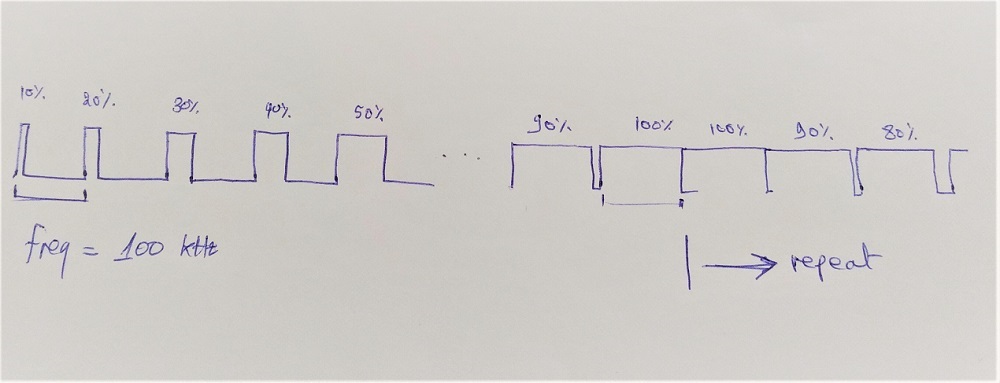Other Parts Discussed in Thread: C2000WARE
Tool/software: Code Composer Studio
Hello,
I wanna generate the following signal using LAUNCHXL-F28379D. Is there a way to configure ePWM to change the duty cycle in each period (like 10%, 20%, ...., 90%, 100% and then 100%, 90%,....., 10%) and then repeat the process again and again?
Regards,
Younes


